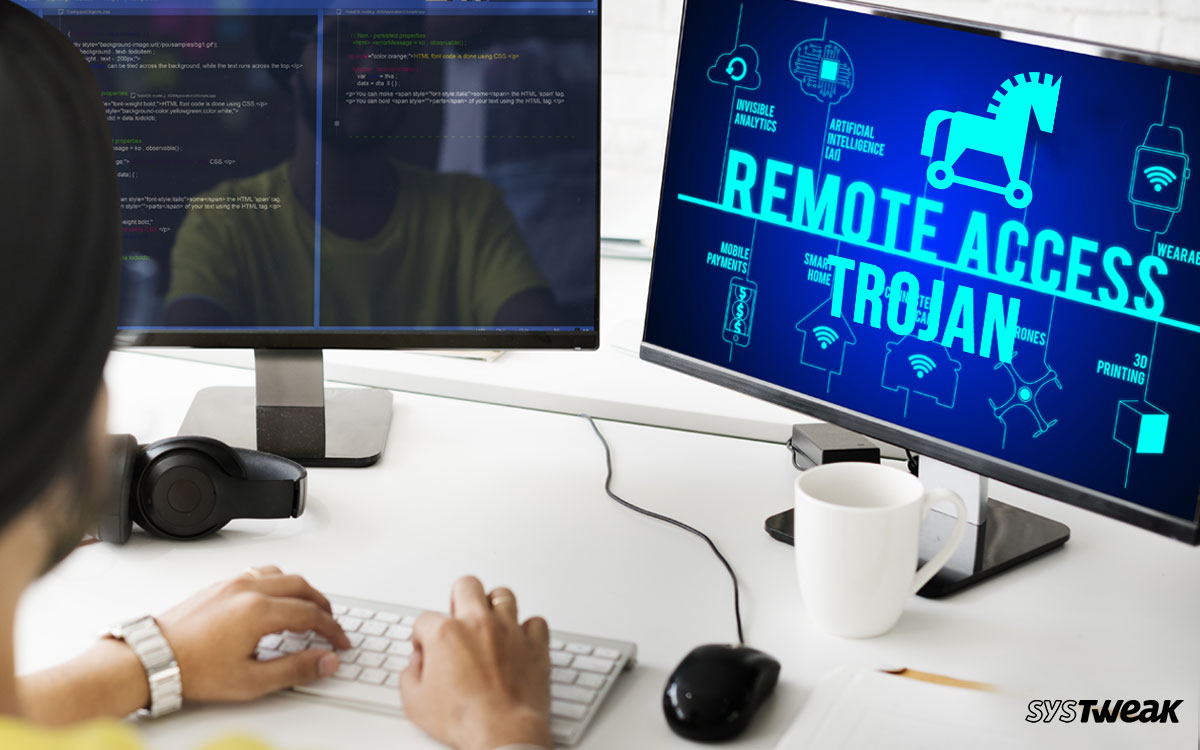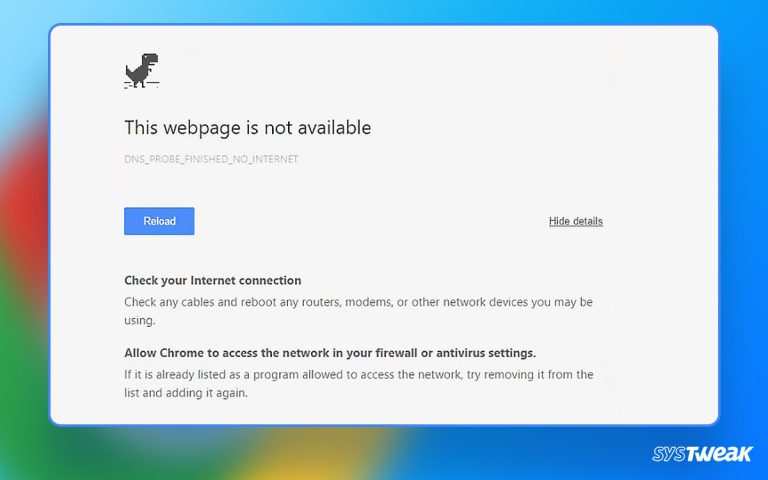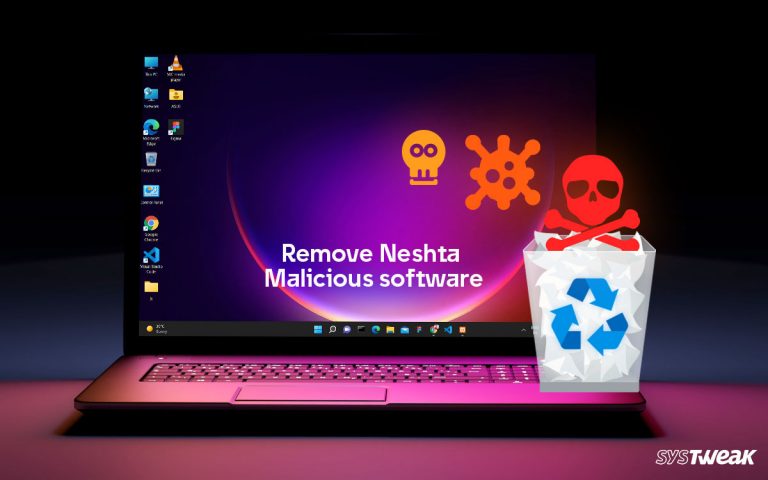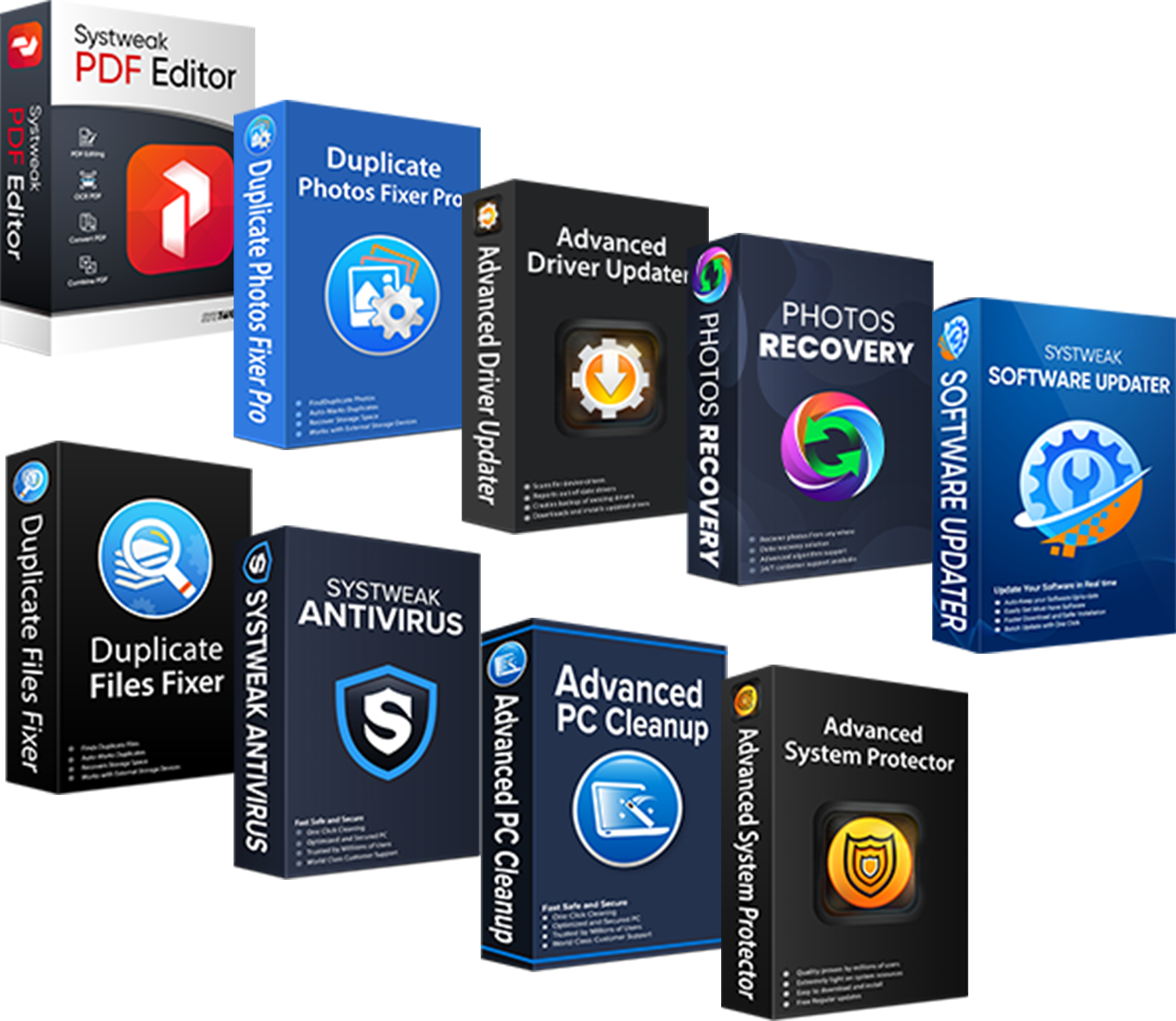Do you often download files from unknown sources and open all the attachments that you find in your mailbox? If yes, then you need to stop now. Why? Because there’s a RAT outside! Wait, we are not talking about those little rats.
50% OFF

BLACK FRIDAY OFFERS
Unlock Black Friday Mega Savings — Systweak Tools FLAT 50% OFF!

By RAT, we mean Remote Access Trojans are highly problematic programs for invasion of privacy and keeping your data safe.
Let’s take a deeper dive into what exactly Remote Access Trojans are.
Remote Access Trojan: An Overview
Remote Access Trojan, commonly known as RAT creepware, is a malicious program that often makes its way into your PC without you realizing it, starts living in it unauthorized, and hands over remote access to the user who has targeted you.
Usually, the Remote Access Trojan, like any other trojan virus, is induced in the PC through third-party software and downloaded files. Files from unknown sources, such as email attachments, torrent files, or bundled software from third-party platforms, are the primary source of remote access trojans on any system.
These programs are highly risk oriented as they try to root themselves in the core of your system, gaining access to all your data. There have been incidents when the remote access trojans have created their own botnet by spreading throughout the network that an affected PC uses.
It can do a lot of harm to your PC. These harmful activities include –
- Access confidential data on your PC, like your credentials.
- Monitor your activities to analyze your usage pattern
- Control system resources like Mics and Cameras to spy on you
- Spread malware and viruses.
- Open remote access opportunities for hackers.
All in all, it is a dangerous program to have on your PC.
How to Detect RAT Virus on Your PC?
When one such virus makes its way to the system, it often starts acting weird. Applications stop working like they used to, your number of background processes increase, and whatnot. You can sense when it is taking over your device.
To detect the virus on your computer, you can try the following hacks –
Method 1 – Detect Remote Access Trojan Using System.ini
Step 1 – Go to the start menu and search for Command Prompt
Step 2 – Run the Command Prompt as Admin from the start menu search result.

Step 3 – In the Command prompt, use the command system.ini
Step 4 -This will bring up a notepad file containing information about the system.

Step 5 – Check if the Drivers section has more than two entries with different characters in the opened file.
If you find something odd, someone else is remotely accessing your PC, or there is a RAT malware on your computer.
Method 2 – Detect RAT Virus Using PID of the Process
Step 1 – Go to the start menu and search for Command Prompt
Step 2 – Run the Command Prompt as Admin from the start menu search result.
Step 3 – Use the command netstat -ano and hit enter in the command prompt.

Step 4 – This will help you find the PID of foreign programs that appear repeatedly on your PC.

Step 5 – Minimise the CMD window and press Ctrl+Shift+Esc to open the task manager.
Step 6 – In the Task Manager window, Go to the Details tab, where you can also find the PID section.

Step 7 – Match the PID for the repeated program from the CMD to find out what program it is.
When you match them both, you can identify that program as a malicious file with the potential threat of being a RAT virus.
Read Also: Stop Potentially Unwanted Programs from Degrading Your PC! Ways to Avoid PUP
Method 3 – Use an Antivirus Program
If you cannot perform the above two methods manually, you can opt for an advanced antivirus and security program that allows you to detect and remove the virus. We recommend that you go for the T9 Antivirus program, as it has dedicated real-time shields that notify you as soon as a malicious program is detected.
How to Remove Remote Access Trojan from PC?
If the above methods allow you to identify the program causing the issue, you can instantly uninstall and remove all related files. However, steps are involved to remove the program entirely from the system. Here are these steps –
Step 1 – Stop the Malicious Service
With the help of Methods 1,2 and 3 mentioned above, you can identify exactly which program is serving as RAT in the system. The first thing to do now is to stop that service completely. Here’s how you do it –
- Press Win+R to open the run search.
- In the run search, use the command msconfig and hit enter.

- This will open the system configuration window.
- Navigate to the services tab in the window and scroll to find the exact service.

- Stop the malicious service entirely by selecting the service and clicking on Disable.

Once you have stopped the service, hop on to step 2.
Step 2 – Disconnect the Internet Connection
The next thing you need to do is disconnect the system from any network. This will make the RAT virus weak as it feeds on remote access.
Step 3 – Use a Removal Program Like T9 Antivirus
Now that you have the RAT virus vulnerable and in your sight, use the T9 antivirus to delete the program. Here’s what you need to do –
- Download the T9 antivirus and install it on your computer.
- Run a quick scan on your computer, as it will highlight the malicious applications and files on your computer.

- Check if the service you identified is available in the detected programs.
- Remove the program by thrashing it via the T9 firewall.
These 3 steps can allow you to get rid of the Remote Access Trojan completely. Implement them and check whether things are back to normal on your computer.
Stay Safe From the Remote Access Trojan Virus
Now that you have successfully removed the virus, you must learn a few things that may help you avoid having one. Malware and viruses like the RAT are commonly induced in a system by a user unknowingly. Here are some practices that may allow you to avoid it from happening again –
- Avoid Using Untrusted Sources for Downloading Files
- Always Have an Active Security Program like T9 Antivirus
- Never Keep Your Credentials on Your PC without protection
- Keep System Definitions & Security Patches Updated
- Use a VPN Before Visiting Unknown Sources
Use these 5 tips, and you may never encounter issues related to a trojan virus entering your system. We hope this post gave you enough insights on how you can detect, remove and stay safe from the Remote Access Trojan.
Download T9 Antivirus today to use your PC carefree! Thanks for reading. Good luck.
Recommended :
Are Windows Defender Security Warning Alerts Fake? – It May be a Virus!
Fixed – Security Intelligence Update not Downloading on Windows





